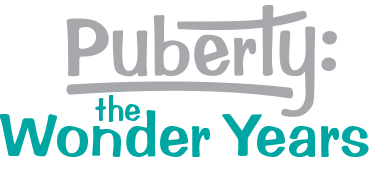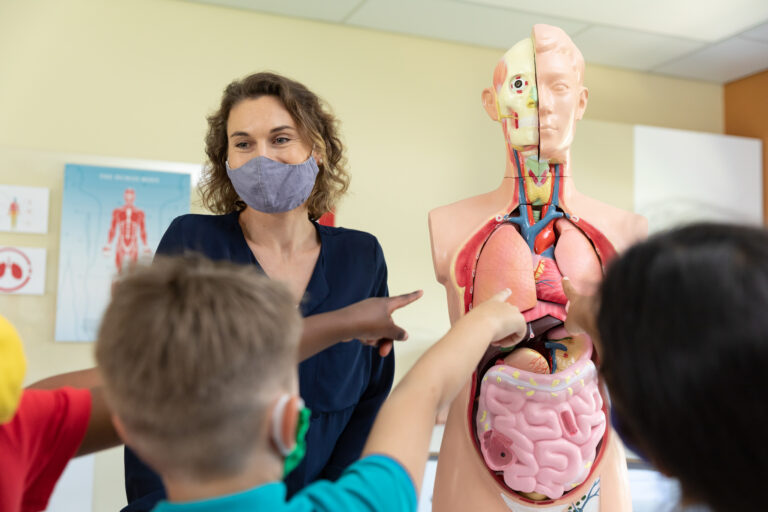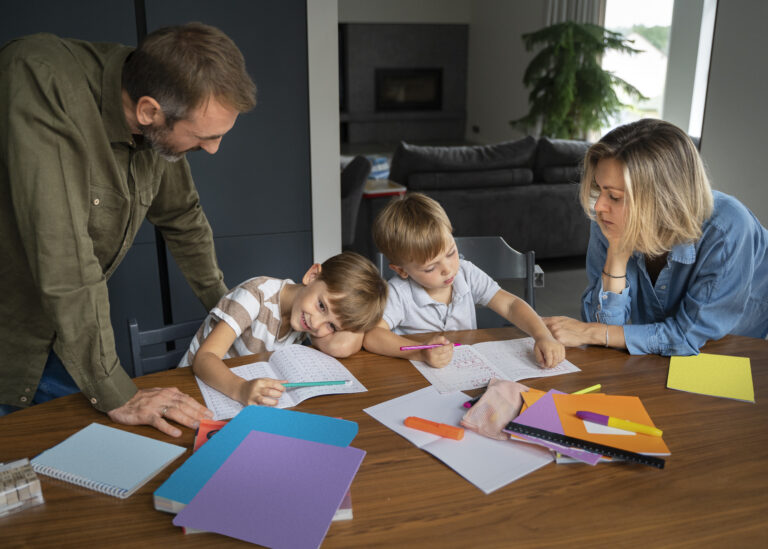Introduction
Disability can impact a variety of skills across many different systems and impact people in various ways. Not all disabilities are visible, and not all people who experience physical, cognitive, or mental health conditions identify as disabled. People can become disabled for many different reasons throughout the life course. Disability may also change in response to different factors and is just one of many elements that shape people’s experiences in the world. People with disabilities can identify with any gender and sexual orientation and can enjoy satisfying relationships regardless of gender, sexual orientation, or any other identity. However, culture and community influence views on bodies, abilities, and sexuality. Disability identity exists in the context of other identities that should be represented in lessons. Awareness of intersectionality and appreciation for all aspects of people’s identity is important, so students can bring their full selves to class and engage meaningfully with content.
Intersecting Identities
Identity and intersectionality are complex. Historically, movements that support people who carry marginalized identities amplify certain voices and experiences but forget to consider the full spectrum of experiences. For example, the civil rights movement of the 1950s and 1960s focused on racial equality, but desegregation is not enough for people who also need accessibility to use public spaces. Similarly, many disability rights activists of the 1970s were white and struggled to embrace Black voices. Some in the disability rights movement feared that racial identity would divide the disability community rather than bring people together. Others were concerned because welfare was deeply racialized, but disability rights was supposed to be the antithesis of welfare. Focusing on just one set of identities erases the experiences of people beyond that single demographic.
As described by Angel Love Miles, a Black disabled woman who shares her experience at the intersection of different identities, opportunities for social connections are often a challenge. School events for Black students are not necessarily accessible, and events for students with disabilities do not necessarily reflect Black culture. People with disabilities who identify as LGBTQ+ face similar barriers to community as many Pride events are not accessible. Light and noise can pose challenges for people with sensory sensitivities as well as visual or hearing impairments. Many events are outdoors without seating or accessible restrooms. Stereotypes around how identities present can make people with disabilities feel unwelcome if bodies do not match social expectations.
Intersectionality and Safety
Educational, social, and healthcare spaces pose extra challenges for people who hold multiple marginalized identities. According to the National Center for Education Statistics, school dropout rates are higher for youth with disabilities, and bullying can be a significant source of dropping out of school. Unfortunately, disability is among the most common reasons for school bullying. According to GLSEN, more than one in three students who identify as LGBTQ+ and have a disability report being harassed or bullied in school because of disability.
Safety and belonging are also concerns in healthcare, which can cause or compound trauma. The medical field has a long history of violence against people of color. Many healthcare providers are not trained to support the LGBTQ+ community, which makes finding providers more difficult but also so necessary for people of all identities to live healthy lives.
Supporting Intersectionality in Class
Culture and community influence people’s experiences in their body and all interactions. Educational accommodations and self-advocacy may need to be tailored to reflect cultural sensitivities. Universal design in lesson structures can allow for flexibility to experiment with different options to identify what works well. Representation of people with a variety of disabilities in visual content and lesson prompts should reflect people of different racial and ethnic identities in a variety of relationships. Information on infections, pregnancy, birth control, or any healthcare experience should center bodily autonomy. Educators should remember that abuse is heightened against people of marginalized identities.
Culture also shapes communication, which can influence self-advocacy for students whose identities are marginalized. This is important for teachers to keep in mind to foster successful educational partnerships with students. Recognizing students’ intersectionality, that students carry many identities simultaneously, is key to ensuring that all students can relate to lessons and make meaningful connections to their lived experiences.
This post is the last of a 7-part series on Disability and Sexuality written by guest blogger, Ashira Greenberg. Read part 1, Introduction to Disability and Sexuality. Ashira Greenberg (she/her/hers) graduated with her Master of Public Health from Columbia University’s Mailman School of Public Health. Following graduation from Columbia University, Ashira also received CHES certification. She is passionate about child, youth and family health with an interest in improving healthcare and educational experiences for all young people. Ashira is especially committed to advocacy and health promotion on behalf of youth with physical disabilities, chronic illness and complex health needs. She has been involved in a variety of advocacy-related efforts as part of her local disability community for over 10 years.
Notes and Resources
- Intersectionality and Disability, The NCCSD Clearinghouse and Resource Library
- The Intersectionality of Race and Disability, Michigan Department of Civil Rights
- Disability: What Have Black People Got to Do with It? by Angel Love Miles, African American Intellectual History Society (AAIHS)
- The Cultural Dynamics of Being Asian and Disabled, Rooted in Rights
- Tips for Making Classrooms More Inclusive as Students Head Back to School, Human Rights Campaign
- Creating an Inclusive Classroom, Edutopia
- Best Practices for Creating an Inclusive Classroom Environment, Walden University
- Student Reports of Bullying Results From the 2017 School Crime Supplement to the National Crime Victimization Survey, U.S. Department of Education
- The 2019 National School Climate Survey, GLSEN
- LGBT People with Disabilities, Center for American Progress
- It’s Time to Expand the Narrative About Queer and Disabled Communities, Ad Council
- Why Don’t More People Know Harriet Tubman Was Disabled?, Rooted in Rights
- Finding Disabled Transgender Pride, Rooted in Rights
Note on Person-First Language: This post uses Person-First Language as Person-First Language is generally considered to be the most respectful form for professional writing and/or talking about a group of people whose individual preferences are unknown. Individual preferences for Person-First Language or Identity-First Language are equally valid and should always be respected when referring to an individual



